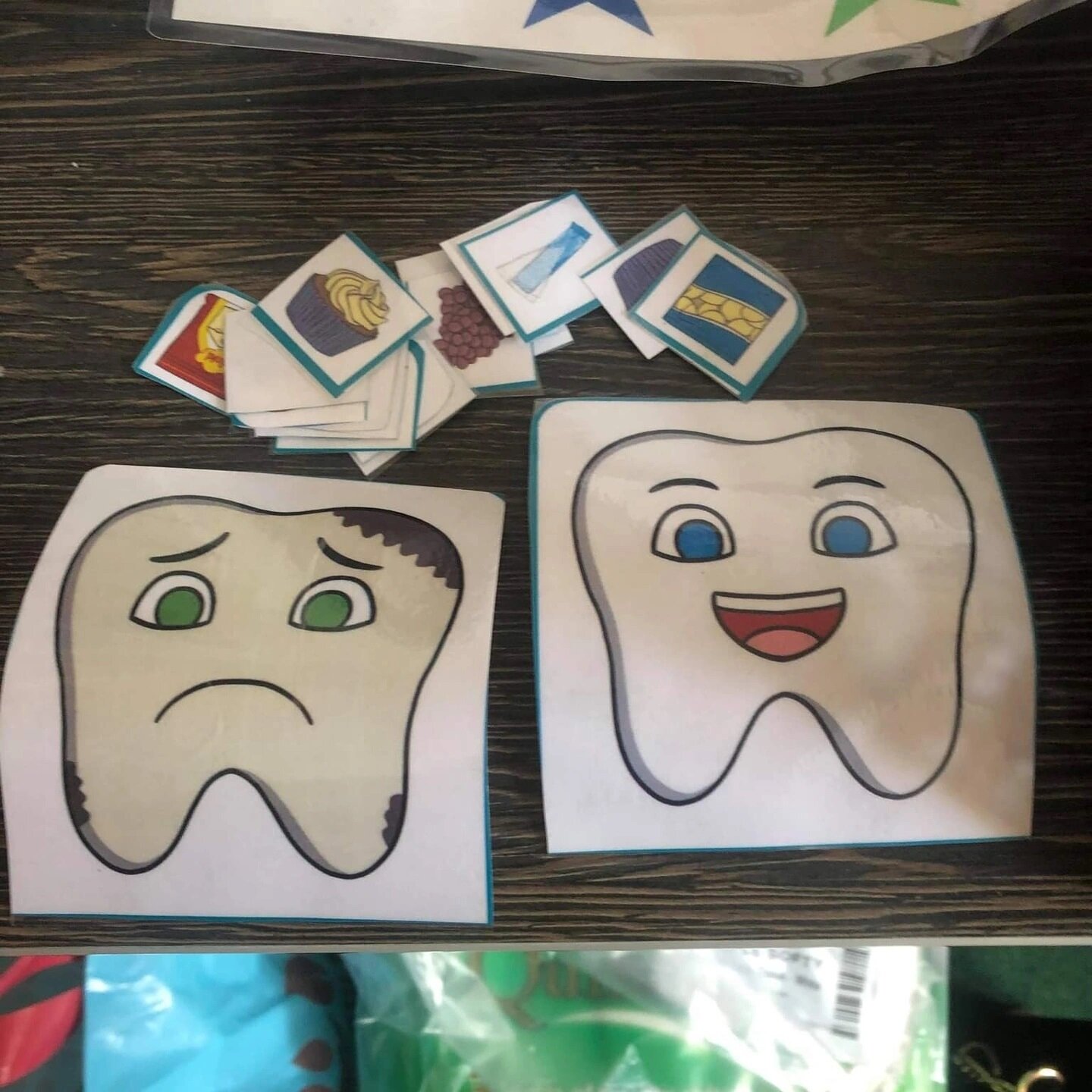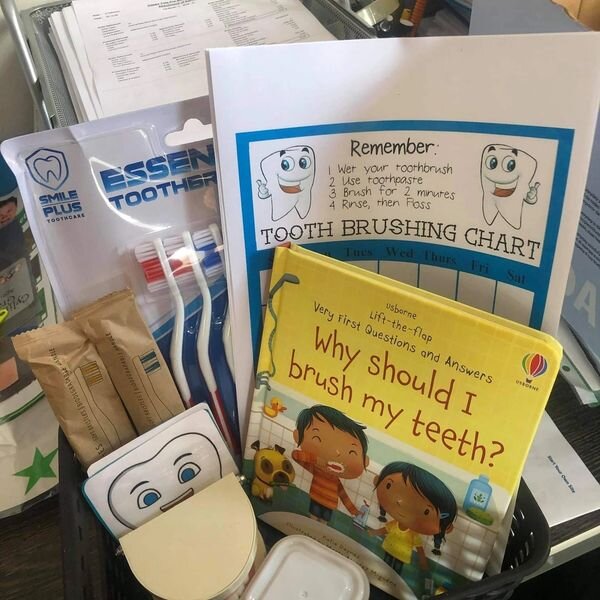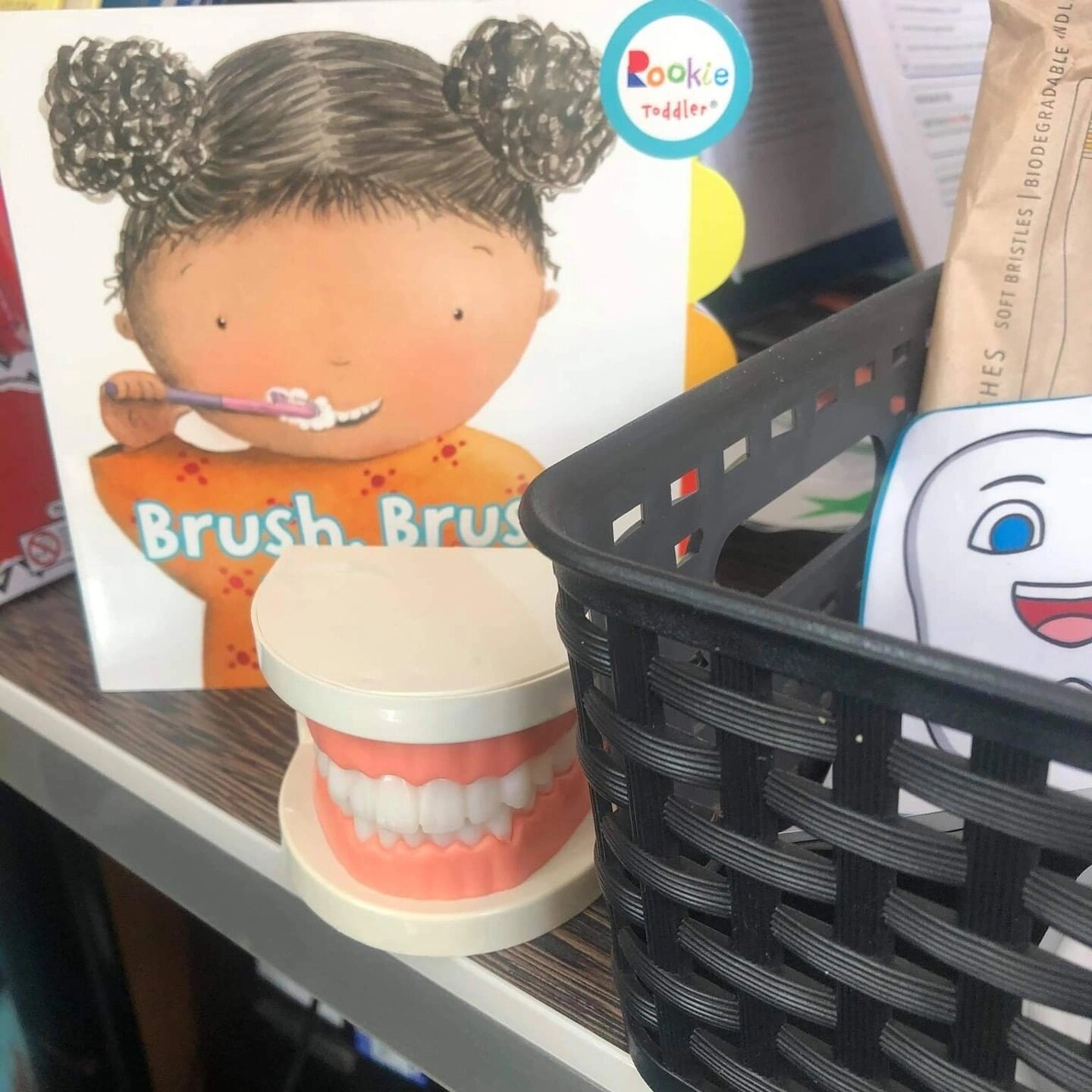Alan’s Big Scary Teeth
A blog that explores how you can extend the popular story Alans Big Scary Teeth with young children.
This is a fantastic book to explore with children in the early years, especially for those children who are animal fanatics. You can take this book in many directions, as you think about a fun-loving alligator who loves to scare, with his big scary teeth. Part three of our oral hygiene series explores, how we can use this beautifully illustrated book, bound to make children laugh to promote good oral hygiene in the early years. Alan is an alligator with a secret, his teeth they are in fact false teeth. Alan wakes up one morning and has lost his teeth, can he still be scary without them? We are going to explore some ways you can use this story within your setting and tell it in a fun and exciting way, with extension activities.
Make a Story Sack
In the early years story sacks are a great way to engage children and keep them focused as you tell a story. They don’t have to be expensive, or shop brought, think about making a home-made story sack and collecting your own items to go alongside the book. For example, using a crocodile and animal puppets, having pretend teeth or false teeth for the children to see and touch and a book with your sack. Having story sacks prepped and ready to go for different books can help you in the busyness of the day (when you might not have time to gather everything for your story) but may also inspire yourself or your team in another way.
Tell the Story in a Sensory Way
Engaging all of children’s senses or using a couple of different ideas to engage senses within storytelling, helps to promote brain development, learning and help children to focus.
To download a PDF copy of this document for only £1, please click here.
Do you want to find out more about sensory story telling? Why not join out webinar, sensory story tellers in the early years? Click here to find out more.
Clean Alans Big Scary Teeth
As an extension of this story, you can have a go at cleaning Alans’s teeth afterwards. Simply use false teeth (or laminated pictures of teeth) and mark make on them with a whiteboard pen. Then use a toothbrush, toothpaste, and water to brush all the marks of the teeth.
Mirror Play
Can you scare as well as Alan? Set up some mirrors and pictures of people pulling scary faces and see if you can practise pulling a scary face just like Alan in the mirror. It is a great opportunity to talk with children about what makes a face scary and identify the different features of our faces. Children can also look closely at the teeth, eyes, and facial features. You can also incorporate some ICT by taking photos of each other pulling scary faces and add them to the display.
Another mirror play activity you can do is mark-making with toothpastes and toothbrushes on a mirror. This is great for developing children’s gross motor and fine motor skills, sensory development, and interest in making and exploring marks.
Keep an eye out for our next blog to find out, more books that you might use to promote oral hygiene in the early years.
Promoting Good Oral Health in the Early Years
September 2021 brought with it the introduction of the New Revised Framework in the Early Years. This has included a new requirement to the safeguarding and welfare requirements to promote good oral health of children. This does not mean overnight we are expected to become dentists or that we should be checking children’s teeth, however there are many ways that we can support children’s oral health.
September 2021 brought with it the introduction of the New Revised Framework in the Early Years. This has included a new requirement to the safeguarding and welfare requirements to promote good oral health of children. This does not mean overnight we are expected to become dentists or that we should be checking children’s teeth, however there are many ways that we can support children’s oral health.
Currently with the UK tooth decay in children costs the NHS (National Health Service) over £40 million a year (Guardian, 2020). This has become a huge burden on the NHS, but also, we can see a growing inequality amongst children from different social economic backgrounds. For example, The Child Dental Health Survey (2013) discovered:
“Children in more deprived areas have higher levels of tooth decay and are less likely to brush their teeth at least twice daily.”
Therefore, some settings, especially those in more deprived areas are deciding to opt into a supervised toothbrushing scheme. However, the introduction of promoting good oral health, does not mean it is compulsory for early years settings to participate in supervised toothbrushing. When considering whether you are or are not going to participate in supervised toothbrushing, I think it is important to reflect on the following questions:
· What would be your intention behind doing supervised toothbrushing?
· Do the sessions that your setting offer, fit in with being able to offer the toothbrushing scheme? (For example, 9-12 or 9-3 settings may struggle with this).
· How would you practically implement the supervised toothbrushing scheme?
· What would be the desired impact of children within your setting participating in the supervised toothbrushing scheme?
If as a setting you do decide to participate in a supervised toothbrushing scheme you can find guidance here on supervised toothbrushing in covid-19. You can also find PHE (Public Health England) guidance – Improving Oral Health: a toolkit to support commissioning of supervised toothbrushing programmes in the early years and schools’ settings by clicking here.
An image of the oral health home learning basket created by Lisa Brown at Happy tots Preschool in Ipswich.
Supervised toothbrushing is not the only way as early years practitioners that we can promote oral health for our children. Parental engagement and support are going to be so important as we get the messages out about good oral health. Through things such as the picture above where we have a home learning basket on the subject, story sacks, leaflets or activities sent home. To parent workshops focusing on good oral health and nutritional diets.
As early years settings we also have a responsibility to promote healthy eating and choices with children and one of the ways that we do this is through offering children a balanced diet that meets their nutritional needs. There is a very useful document that you can find here, with example menus for early years settings to ensure that we are providing a balanced diet for those children in our care.
Finally, we can use our curriculum (what we want children to learn), to help support children’s understanding of oral health from a young age. From providing specific activities, experiences and extending children’s cultural capital. Keep your eyes posted for our next blog where we discuss specific activities, ideas and provocations for promoting oral health with young children.






